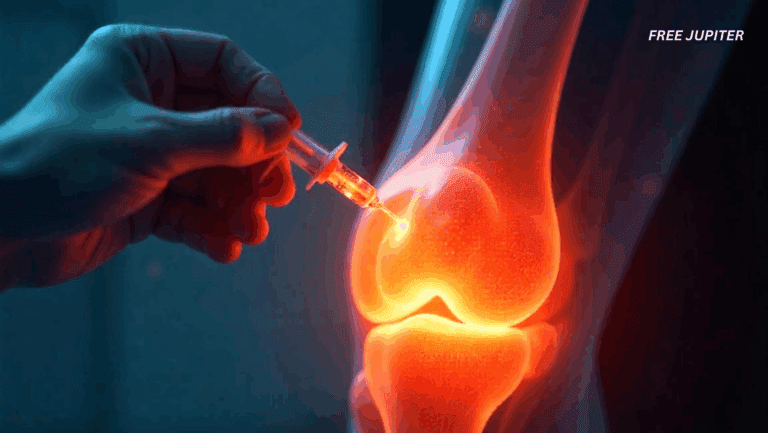Emerging research reveals an intriguing and hopeful link between dietary fiber and the reduction of stubborn toxic substances known as PFAS—often referred to as “forever chemicals”—in the human body. These findings, stemming from a recent pilot study, could pave the way for a simple, accessible approach to lowering harmful chemical burdens many of us unknowingly carry.
What Are PFAS and Why Should We Care?
PFAS (per- and polyfluoroalkyl substances) are a vast group of man-made chemicals—numbering around 15,000—that have been widely used for decades to make products resistant to water, stains, and grease. Their applications range from non-stick cookware and waterproof fabrics to firefighting foams and food packaging.
Unfortunately, PFAS are incredibly persistent. They don’t break down naturally in the environment or the human body, earning them the nickname “forever chemicals.” This persistence means they accumulate over time, and research links them to a concerning array of health issues including certain cancers, birth defects, weakened immune systems, elevated cholesterol, and kidney problems.
Data from federal health agencies reveal that nearly every American has detectable levels of PFAS in their bloodstream. Among these, two chemicals—PFOA (perfluorooctanoic acid) and PFOS (perfluorooctane sulfonate)—are especially prevalent and hazardous. These compounds linger in the body for years, with half-lives estimated between two and five years, meaning it can take decades to fully clear them.
The Problem of PFAS Exposure
Certain environments, such as military bases, have become hotspots for PFAS contamination, exposing thousands of people to these chemicals. Recognizing the urgent need for solutions, the U.S. Department of Defense is funding research to explore ways to reduce PFAS levels in affected individuals.
The Fiber Connection: How It Might Help
A recent pilot study involving both animal subjects and a small group of human participants examined whether increasing dietary fiber intake could help lower PFAS concentrations in the body. Jennifer Schlezinger, a co-author from Boston University, expressed excitement about the preliminary results, noting that this strategy is not only promising but also practical and affordable.
So, how does fiber come into play? The researchers believe that certain types of dietary fiber create a gel-like substance in the digestive tract. This gel may block the intestinal lining from absorbing PFAS compounds. The process is somewhat similar to how fiber interferes with the reabsorption of bile acids—a substance chemically related to long-chain PFAS like PFOA and PFOS.
Bile acids normally recycle through the gut, but fiber binds to them, encouraging their elimination through feces. Because PFAS can hitch a ride with bile acids, fiber’s ability to trap bile acids may also help escort these harmful chemicals out of the body.
Read more: The Exact Amount of Fiber You Need Daily to Protect Against Chronic Disease
Types of Fiber and Their Roles
Dietary fiber comes in two primary forms: soluble and insoluble. Both play distinct but complementary roles in digestive health and, as the study suggests, in PFAS elimination.
- Soluble Fiber: This type dissolves in water to form a gel-like material. It slows digestion, helps regulate blood sugar, and binds to bile acids. Examples include oat beta-glucan, pectins found in fruits, and gums from legumes.
- Insoluble Fiber: This fiber adds bulk to stool and helps food pass more quickly through the stomach and intestines. It is found in whole grains, nuts, seeds, and the skins of fruits and vegetables.
The study emphasizes the importance of consuming both types to optimize the binding and removal of PFAS.
Read more: New Research Proves That Humans Have A ‘Magnetic’ Sixth Sense
Best Fiber Sources to Support PFAS Elimination
Incorporating a variety of fiber-rich foods into your diet is key. Here’s a detailed list of foods rich in both soluble and insoluble fiber that may aid in reducing PFAS levels:
Fruits (Rich in Soluble and Insoluble Fiber)
- Apples (with skin): Contain pectin, a soluble fiber that forms gels.
- Bananas: Provide resistant starch and soluble fiber.
- Oranges: High in pectin and flavonoids.
- Strawberries and Raspberries: Loaded with both fiber types and antioxidants.
- Mangoes, Persimmons, Guavas, Apricots: Offer a mix of fibers and vitamins.
Vegetables (Excellent Fiber Sources)
- Carrots and Beets: High in soluble fiber and antioxidants.
- Broccoli and Brussels Sprouts: Rich in insoluble fiber and sulfur-containing compounds.
- Sweet Potatoes (with skin): Contain both fiber types and beta-carotene.
- Artichokes and Acorn Squash: Great sources of inulin, a prebiotic soluble fiber.
- Green Peas, Turnip Greens, Cauliflower, Collard Greens, Swiss Chard, Potatoes (with skin): Provide a balance of fibers and essential nutrients.
Legumes (High in Soluble Fiber and Protein)
- Kidney Beans, Lentils, Split Peas, Chickpeas, Navy Beans, Pinto Beans, Soybeans: These are fiber powerhouses that also support gut health through prebiotic effects.
Whole Grains (Primarily Insoluble Fiber)
- Oats (especially oat beta-glucan): Noted for cholesterol-lowering and bile acid-binding properties.
- Whole-grain Breads (seven-grain, dark rye, cracked wheat, pumpernickel): Provide a robust fiber profile.
- Bulgur Wheat, Brown Rice, Wild Rice, Barley: Offer a mix of fiber types and essential minerals.
Nuts and Seeds (Insoluble Fiber and Healthy Fats)
- Sunflower Seeds, Pumpkin Seeds, Pistachios, Almonds: Contain fiber along with heart-healthy fats and micronutrients.
Snacks
- Air-popped Popcorn: A whole grain snack rich in insoluble fiber.
Timing Matters: When to Consume Fiber
The study suggests that fiber is most effective when consumed with meals. This timing aligns with the body’s natural bile acid production, which increases during digestion. Since PFAS molecules can bind to bile acids, consuming fiber alongside meals maximizes the chance of trapping and eliminating these chemicals through feces.
Limitations: What Fiber Can and Cannot Do
While fiber shows promise in reducing long-chain PFAS such as PFOA and PFOS, it appears less effective against short-chain PFAS. These smaller molecules tend to be excreted through urine rather than feces, indicating that fiber’s binding mechanism may not capture them efficiently.
Comparing Fiber to Pharmaceutical Options
Cholestyramine, a medication designed to lower cholesterol, has also been used to reduce PFAS blood levels. However, it often causes side effects like frequent, hard stools and gastrointestinal discomfort, as seen in animal studies. Fiber, by contrast, encourages smooth digestion and offers additional health benefits such as improved heart health, better blood sugar control, and enhanced gut microbiome diversity.
Read more: Australia Is Using 3D Printers To Save Coral Reefs, And The Fish Are Already Moving In
The Road Ahead: Expanding Research and Practical Applications
The research team is preparing for larger clinical trials to further investigate fiber’s role in PFAS elimination. These studies will help clarify optimal fiber types, amounts, and timing, as well as explore the long-term impacts on human health.
If these findings are confirmed, increasing dietary fiber intake could become a straightforward, cost-effective strategy to help reduce the body’s burden of these pervasive chemicals. This approach fits well within broader public health efforts aimed at minimizing exposure to environmental toxins.
Final Thoughts
The possibility that something as simple and accessible as fiber-rich foods can aid in flushing out harmful “forever chemicals” is both encouraging and empowering. By embracing a diverse diet rich in fruits, vegetables, legumes, whole grains, nuts, and seeds, individuals can support their body’s natural detoxification processes while enjoying numerous other health benefits.
As science continues to unravel the complexities of PFAS and their impact on human health, practical lifestyle choices like increasing fiber intake may offer a valuable line of defense against these invisible threats.










